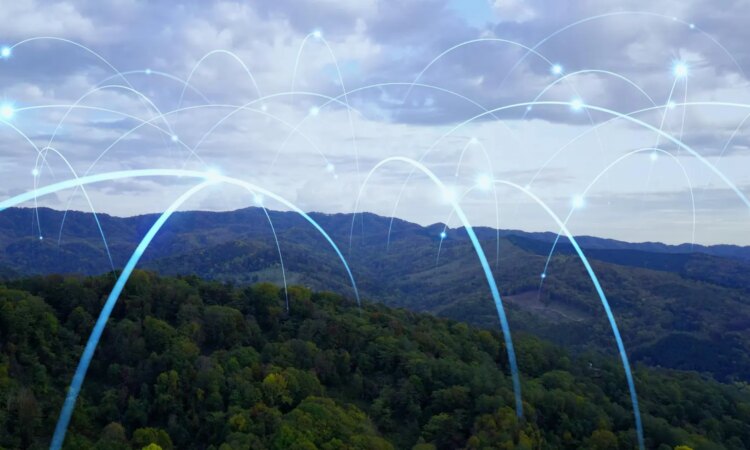
Peter Ford is Executive Vice President, Information Solutions Business for iconectiv.
AI is a major reason why data center operators are scrambling to line up enough electricity for both compute and cooling. One example is Microsoft’s 20-year contract to buy all 835 megawatts that Three Mile Island’s Unit 1 nuclear reactor is capable of generating. That sounds like a lot (and it is), but it’s a light bulb compared to the 5-gigawatt data centers that OpenAI and others are planning.
Microsoft’s nuclear deal also shows how hyperscalers and other data center operators are focusing on power sources that don’t increase greenhouse gas (GHG) emissions. Another example is Google, which recently committed $3 billion to procure carbon-free hydropower through a 20-year agreement—the largest corporate hydroelectric deal in history.
As energy costs rise and sustainability targets tighten, communications service providers (CSPs) are in a unique position to help data center operators and their enterprise customers optimize both their energy efficiency and carbon footprint.
To put this in perspective, the Information and Communications Technology (ICT) sector produces only about 1.4% of the world’s GHG emissions, but it’s capable of reducing the total carbon footprint of other sectors by up to 15%. “In terms of global decarbonization, this equals around one‑third of the halving of emissions deemed crucial by 2030,” according to an Ericsson study.
Reducing Network Power Consumption
One reason why CSPs will play such a key role is that they both enable AI and use it themselves. For example, AI requires enormous amounts of real-world information, a lot of which comes from Internet of Things (IoT) devices such as sensors and surveillance cameras. Mobile, wireline and cable CSPs provide the networks that connect those IoT modules to data center clouds.
CSPs also increasingly use AI to optimize and secure their networks, and many CSPs own or lease data centers to host parts of their infrastructure, such as mobile core and radio access networks (RANs).
As a result, CSPs and the rest of the telecom ecosystem are already focused on new opportunities to optimize network energy efficiency in the AI era. Like hyperscalers, CSPs have environmental, social and governance (ESG) goals such as net-zero. The ability to quantify progress toward those goals is increasingly important to investors and regulators, as well as to consumers and businesses that put a premium on sustainability.
There’s also a solid business case for optimizing network energy efficiency. For example, the GSMA estimates that electricity is 20% to 40% of operating expenses for mobile CSPs. Data centers and core networks are responsible for approximately 19% of total energy consumption in mobile networks, according to the Next G Alliance’s Green G Working Group.
Reducing energy consumption can help CSP margins because they’re better able to price their services competitively yet profitably. These savings also help CSPs expand in highly price-sensitive markets, such as the IoT applications that fuel AI.
Knowledge Is Power—Literally
The key to optimizing network energy efficiency is having an accurate, granular and continually updated database of each piece of infrastructure: its physical location, capabilities, access to other networks for interconnection, electrical requirements and even the amount of heat generated (which determines the amount of power necessary to cool it). This data gives CSPs the insights necessary to track energy usage and identify opportunities to maximize efficiency.
Take the example of a cellular base station. One of the major power draws is cell switching, which is the process of handing off a connection from one site to another as the device moves around. Detailed information on each base station’s attributes enables CSPs to make more informed network planning decisions.
For instance, they can avoid inter-cell distances that cause frequent or inefficient switching, leading to unnecessary power draw. They can also avoid unnecessarily expanding a base station’s coverage area, which requires higher transmit power and increases electric consumption. Finally, AI itself can be used to analyze this data to ferret out inefficiency that humans might overlook.
Nearly 89% of global businesses plan to increase spending on energy efficiency over the next five years, according to an ABB survey. In the process, CSPs have an opportunity to help hyperscalers and enterprises meet their efficiency and GHG goals by providing networks that get data to and from the cloud with the least amount of electricity.
CSPs already sit on a goldmine of infrastructure intelligence—they just need to unlock its full potential. The first step is taking inventory: understand where data lives across your network, how it’s collected and how often it’s updated. From there, invest in tools that unify and visualize this data to reveal inefficiencies that aren’t obvious in silos.
Equally important is embedding AI and analytics into network operations—not just to monitor energy use, but to predict and prevent waste before it happens. Start small with pilot programs that measure tangible outcomes such as reduced power draw or improved cooling efficiency. Those early wins can guide broader rollout and help justify continued investment.
In the end, optimizing energy efficiency isn’t just an ESG initiative—it’s a business imperative. The CSPs that harness their data most intelligently are the ones that I believe will power the next generation of sustainable, AI-driven connectivity.
Forbes Technology Council is an invitation-only community for world-class CIOs, CTOs and technology executives. Do I qualify?





